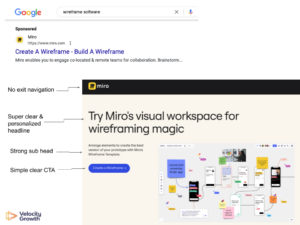SEO For Startups: The role of SEO in startup growth
Starting a new business requires a great deal of time, work, and dedication. When it comes to getting the word out about your new business, the internet offers some of the most powerful tools available. One of the most effective ways to drive traffic to your site and to build a strong, long-term presence on the web is through a strategy known as search engine optimization, or SEO.
Understanding the basics of SEO
Before we dive into the specifics of how SEO can help startup growth, let’s first take a look at the basics of SEO.
SEO stands for Search Engine Optimization.
It is a term for a set of processes aimed at getting a website to appear in search engines for relevant search queries, and ultimately building organic traffic through those search engines.
By investing in SEO you’re increasing the likelihood of your target audience finding you when they search for things related to your product or service. According to BrightEdge Research, 53% of traffic to websites comes from organic search.
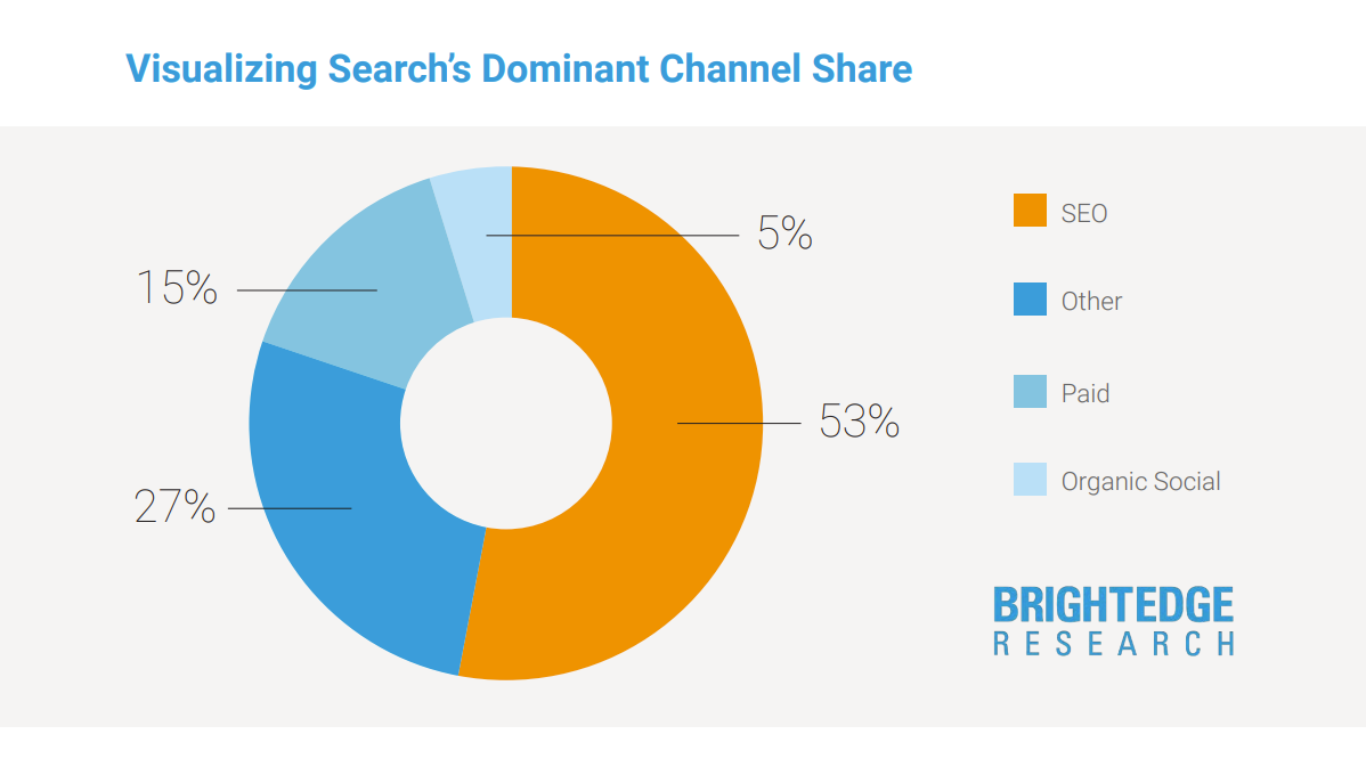
SEO vs PPC
One of the key elements of SEO is understanding the difference between organic results and paid results.
“Organic” search results are not always the only results on a Search Engine Results Page (SERP). They often share SERP space with Paid Search results. Organic results appear in search engines like Google, while paid results are typically marked as ads.
Organic results are the listings that appear on a search engine results page (SERP) that are not paid for. These results are based on the relevance of the website’s content to the user’s search query. Paid results, on the other hand, are advertisements that appear at the top or bottom of a SERP and are marked as such. These results are paid for by the advertiser and are not based on the relevance of the website’s content to the user’s search query.
Positives of SEO and PPC:
| SEO: | Paid Search/PPC: |
|
|
Negatives of SEO and PPC:
| SEO: | Paid Search/PPC: |
|
|
How Google’s Algorithms Work
Whilst we often refer to Google’s “algorithm”, the fact is that there actually is no single algorithm.
Google’s search ranking is a collection of many algorithms. On many occasions Google has said that there are three primary algorithms that impact its information storage, retrieval and ultimately rankings, each of which serves a different purpose:
- The Crawling Algorithm
- The Indexing Algorithm
- The Ranking Algorithm
Crawling
Crawling is the process by which search engines discover content on the web.
Crawlers find new web pages by following links on pages that they have already discovered. You can encourage Google to discover your URLs by:
- linking to them from other key pages on your site (e.g. homepage)
- including them in your xml sitemap (and submitting it to Google).
Indexing
The next stage in Google’s information retrieval process is Indexing.
This essentially involves Google analyzing the content of the page and storing content into specific relevant databases. Sometimes Google will discover and crawl your URL but decide not to index it e.g. when it determines that the content on your URL is too similar to that on another URL.
Ranking
Once a query is entered into a search bar, search engines will check for pages within their index that are a closest match; a score will be assigned to these pages based on an algorithm consisting of hundreds of different ranking signals.
Simply put, the more relevant the content, the better the score, the higher the page will rank. For queries where many sites have similarly relevant content, Google places a lot of trust on expertise/authority.
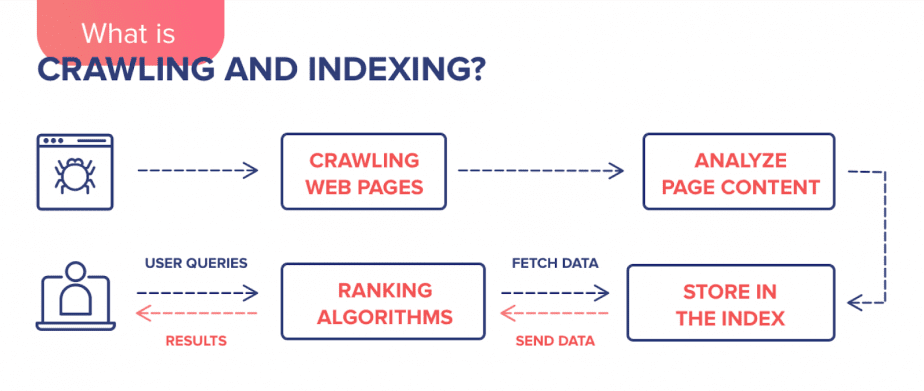
How to Optimize for Google
There are 3 core “algorithm-update-proof” “Pillars” of SEO, that have been proven to contribute to positive SEO results over the long term. These are:
- Technology
- Content
- Authority
Technology
Traditionally, technical SEO was predominantly concerned with the Crawling algorithm. This involved (and still involves) optimizing the technical underpinnings of a website to ensure that your website can be easily crawled by search engines.
This includes things like:
- Page performance optimization
- Logical site structure and navigation
- XML sitemap creation and optimization
- Robots.txt file configuration
Whilst technical SEO has historically been predominantly concerned with the Crawling algorithm, nowadays technical factors are having an increasing impact on the Ranking algorithm.
One of the key technical elements that has gained increasing importance in recent years is schema.org markup. Schema.org provides a standardized vocabulary that allows webmasters to markup their content in a way that search engines can understand. By implementing schema.org markup, websites can provide explicit signals about the type of content they offer, making it easier for search engines to comprehend and display relevant information to users.
Schema.org markup enhances the visibility and appearance of search results through rich snippets, knowledge graphs, and other search features. It enables search engines to present additional information about a webpage directly in the search results, such as ratings, reviews, product details, event information, and more. By utilizing schema.org markup, websites can increase their chances of attracting user attention, improving click-through rates, and ultimately boosting their organic search visibility.
Schema.org markup can also be used to enhance their entity SEO efforts. Entity SEO focuses on optimizing a website’s content to establish connections between entities and create a semantic web. It involves structuring content around entities, rather than just keywords, and ensuring that the relationships between entities are clear and well-defined. By organizing content in this way, search engines can better comprehend the context and relevance of the website’s content.
Schema.org markup can provide search engines with additional information about the entities in your content, such as their type, properties, and relationships. This, in turn, helps search engines to better index and interpret the content, improving the website’s visibility in search results.
Content
Just because search engines can crawl your website to discover and index its content, it doesn’t guarantee that they fully understand the context and relevance of that content. On-page content optimization aims to bridge that gap by optimizing the content itself to provide clear signals to search engines about its topic and intent.
One important aspect of on-page content optimization is to ensure a single clear topical focus for each page. By defining a specific topic for a page, you can optimize the content to revolve around that topic and make it easier for search engines to understand its purpose. This focus allows search engines to match your page with relevant search queries, increasing your chances of ranking higher in search results.
Optimizing title tags and meta descriptions is another essential part of on-page content optimization. These elements provide concise summaries of your page’s content to search engines and potential visitors. By optimizing them to align with your page’s topic and include relevant keywords, you can improve the chances of attracting user attention in search results and increase click-through rates.
Heading tags, such as H1s and H2s, also contribute to on-page content optimization. These tags provide hierarchical structure to your content, highlighting important sections and subtopics. By optimizing heading tags to focus on the page’s topic and incorporating relevant keywords, you can improve the readability and organization of your content for both users and search engines.
Optimizing image alt text tags is another crucial aspect of on-page content optimization. Image alt text provides textual descriptions of images, allowing search engines to understand their content. By optimizing alt text tags to align with the page’s topic and include relevant keywords, you can provide additional context and relevance to both users and search engines.
Lastly, ensuring that your content is authoritative, trustworthy, and written by subject matter experts is key. This concept is commonly referred to as “E-E-A-T” (Experience, Expertise, Authoritativeness, and Trustworthiness). Search engines prioritize content that demonstrates expertise and authority in its field, as well as content that is trustworthy and credible. By creating high-quality, well-researched content written by subject matter experts, you can enhance the credibility and relevance of your website’s content.
Oon-page content optimization is relevant to both the Indexing and Ranking algorithms of search engines. By optimizing your content to clearly communicate its topic, relevance, and expertise, you improve the chances of your pages being properly indexed and ranked for relevant search queries.
Authority
All other things being equal (i.e. your site and your competitor site have similar content and similar technical performance), Google will turn to Authority when deciding which of two similar pages ranks higher.
One important signal of authority is the presence of links from other trusted websites pointing to your site. These incoming links, also known as backlinks, act as votes of confidence from other web pages, indicating to search engines that your website is a reputable and reliable source of information. Backlinks from reputable websites are seen as endorsements and contribute to your site’s perceived authority.
When your website accumulates a sufficient number of backlinks from trusted sources, search engines perceive it as trustworthy. The more authoritative and trusted the linking websites are, the more positively it impacts your site’s authority. As a result, search engines are more likely to rank your content higher in search results for relevant queries.
Building a strong backlink profile requires a strategic approach. It involves actively seeking opportunities to acquire links from reputable and relevant websites. This can be done through various methods, such as creating high-quality content that naturally attracts links, outreach to other websites for collaboration or guest posting opportunities, and networking with industry influencers or experts who may link to your content.
While authority is predominantly concerned with the Ranking algorithm, it is worth noting that it can also indirectly impact the Crawling and Indexing process. Websites with a higher authority are often crawled more frequently and more deeply by search engine bots, which helps ensure that their content is indexed and updated in search engine databases in a timely manner.
Startup SEO Success Factors
Here are the key factors that will determine your SEO success as a startup:
Success Factor 1: Your Niche
Understanding your niche is crucial for effective SEO, especially for startups. While SEO can be a powerful tool for driving organic traffic and visibility, there are certain situations where the potential benefits may not justify the investment, particularly when there is limited search demand for a specific product or service.
In some niche markets, the search volume for particular keywords related to your product or service may be low. This means that there are not many people actively searching for those terms on search engines. In such cases, dedicating significant resources to SEO efforts may not yield substantial results or generate enough traffic to justify the investment. It becomes important to assess whether the “juice,” or the potential benefits, is worth the “squeeze,” or the investment of time, effort, and resources.
For startups that are introducing innovative or disruptive products that are not yet widely known or understood by consumers, the focus should initially be on creating awareness and demand through other marketing channels. These channels could include social media marketing, content marketing, influencer partnerships, public relations, and targeted advertising. By utilizing these channels, startups can generate interest, educate their target audience, and build brand recognition before diving into extensive SEO efforts.
That being said, it’s important to note that SEO should not be completely disregarded, even in niche markets or for innovative products. It can still play a role in establishing a solid online presence and attracting organic traffic over time. It may be a long-term investment that startups can gradually allocate resources to as their brand awareness and customer base grow. In the early stages, pay particular attention to building a technically solid website that is in a good place to become an organic growth engine when you begin to focus on content and link building for SEO.
Success Factor 2: Competition
In other cases, you might come to market with a product for which there is already high demand. Your product may be an improvement on what’s already available on the market but you are entering a market with many highly established competitors that have been around for a long time.
Established companies have the advantage of having built up “authority” or trust with search engines like Google (largely through building up trusted links to their site over the years).
It’s important to note that building authority takes time and consistent effort. It requires a long-term strategy and ongoing optimization. While established competitors may have an initial advantage, by focusing on quality content, link building, on-page optimization, social proof, and brand building, you can gradually improve your website’s authority and visibility in search results.
“One of the things to be wary of, especially in the beginning, is going after high-competition keywords. You simply will not outrank websites who have very high authority, so it’s best to go after lower-competition keywords. When your site acquires higher domain authority, you can start going after those higher-competition keywords” – Mack Dudayev of InsureChance
Success Factor 3: Resources
SEO is a cross-functional discipline that requires investment and collaboration across various areas within an organization, including internal SEO expertise, web development, content creation, PR, and marketing.
When working with limited resources, it can be challenging to allocate a small budget across multiple marketing channels such as traditional marketing, paid social, paid search, PR, and more. In such cases, there is no guarantee that your SEO program will have enough resources to deliver significant results in the short to medium term.
Given the resource constraints, it becomes crucial to prioritize and make strategic decisions. It is advisable to undertake a SEO feasibility analysis at this stage to get a solid understanding of what level of resources it will take to move the SEO dial.
Again, as we’ve mentioned previously, it is always beneficial to ensure that you have a strong foundation for future SEO efforts. This includes focusing on the technical aspects of your website to ensure it is “SEO friendly.” By doing so, you lay the groundwork and avoid the need to reinvent the wheel when the time comes to invest more significantly in an SEO strategy.
Success Factor 4: Expectations
Will SEO drive lot’s of traffic and sales immediately? Probably not…
Will SEO work on it’s own? Probably not…
Before setting out on your SEO journey, it’s crucial to have a realistic understanding of what SEO can and cannot deliver. SEO is not a quick solution for driving immediate traffic and sales. It’s a long-term strategy that requires time, effort, and patience to see significant results.
One important aspect to consider is the competitiveness of your industry and the keywords you’re targeting. Highly competitive terms often have competitors bidding on them through paid search ads, which means you may never appear at the very top of the search engine results page (SERP) for those terms. In such cases, pairing your SEO efforts with paid search advertising can help you capture a larger share of clicks for those competitive terms.
Understanding your niche, competition, and the search demand for your product or service is crucial before embarking on an SEO journey. Taking a “stab in the dark” without proper research and analysis can lead to ineffective strategies and wasted resources. By conducting thorough keyword research, analyzing your competition, and assessing the search demand for your offerings, you can make informed decisions and develop a targeted SEO strategy.
Startup SEO – How To Compete
As a startup, SEO is almost certainly going to be challenging and going to take time.
However you can ensure that you minimise the challenges and expedite the process by following these steps:
- Understand your Competition
- Build your site with SEO in mind
- Carry Out Keyword Research and Mapping
- Create Great Content (Focus on core content first)
- Boost Your Domains Link Profile
Understand the Competition
Understanding your competition is crucial in developing a successful SEO strategy. It provides insights into what it will take to surpass them in search rankings, drive relevant traffic to your site, and ultimately gain a competitive edge. Here are some important details to consider:
- Identify Your “SEO Competitors”: Start by identifying your “SEO competitors” – these are the companies that are currently ranking for the key search queries (keywords) that you also want to rank for. These may not always be the same companies as those who you consider to be your “actual competitors”
- Analyze “Actual Competitor” Rankings: It’s also important to get an understanding of your “actual competitors” i.e. companies who sell the same product / service to the same (or a similar) audience as you in the real world. Understand which specific keywords they are targeting and ranking for. This analysis helps you identify potential keyword opportunities that align with your business goals. By uncovering the keywords your competitors are already ranking well for, you can uncover topics that you should be talking about on your own website or even new ideas for products / services.
- Assess Competitor Link Profiles: A crucial aspect of understanding your competition is evaluating the strength of their link profiles. Links from external websites to your competitors’ sites contribute to their overall authority and search engine rankings. Tools like aHrefs Domain Rating can provide insights into the strength of your competitors’ link profiles. By analyzing their backlink sources and quality, you can gain an understanding of the level of effort required to build a comparable or stronger link profile for your own website.
- Study Competitor Content and Strategies: Analyze the content produced by your competitors, including blog posts, articles, videos, and other forms of media. Assess the quality, depth, and relevance of their content compared to yours. Look for gaps or areas where you can provide more comprehensive and valuable information to your target audience. Additionally, examine their content promotion strategies, social media presence, and engagement with their audience to gain insights into effective tactics you can implement.
By gaining insights into your competitors’ keyword rankings, link profiles, content strategies, and overall performance, you can benchmark your own performance and develop a comprehensive SEO strategy that enables you to surpass them in search rankings, drive relevant traffic to your site, and ultimately achieve your business objectives.
Build an SEO Ready Site
Ideally, SEO should be involved from the very beginning of a website project, during the planning phase. By incorporating SEO considerations early on, you can ensure that your website is designed and structured in a way that aligns with search engine best practices. SEO experts can provide insights on keyword research, content strategy, user experience, and technical implementation to optimize your website’s visibility and performance in search results.
Fundamental Considerations for an SEO-Ready Website:
- Site Structure and Internal Linking
- Site Performance (Page Speed and Core Web Vitals)
1. Site Structure and Internal Linking: A logical site structure and internal linking are crucial for effective crawling and indexing by search engine bots. By organizing your website into a clear and hierarchical structure, you make it easier for search engine crawlers to discover and navigate through your pages.
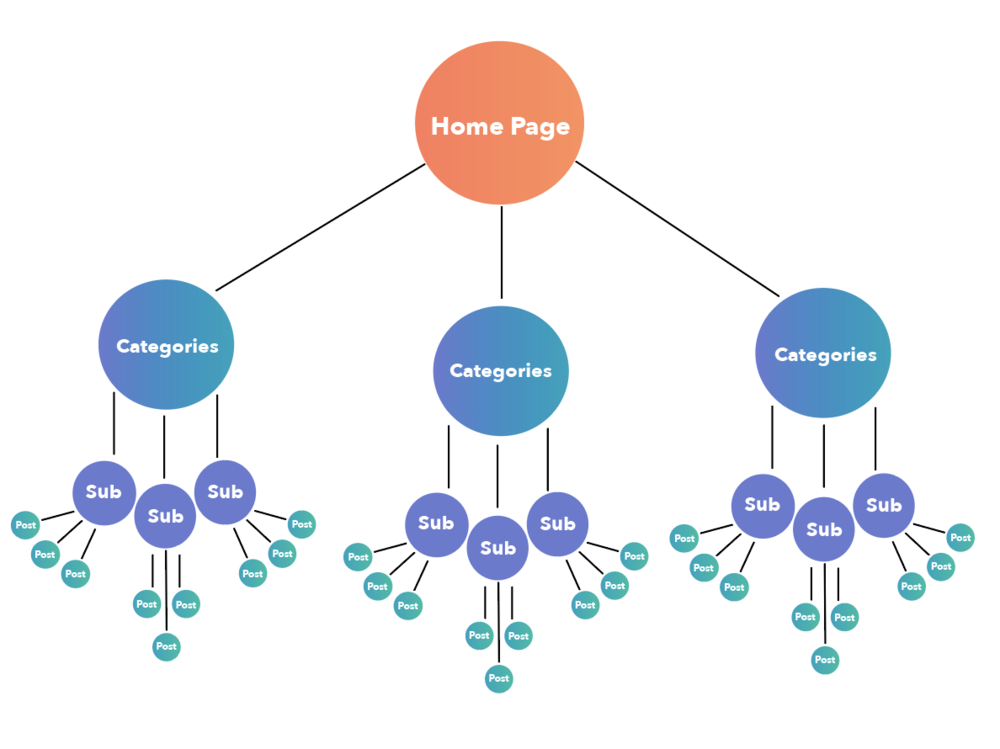
Internal linking helps to connect related pages, distribute link equity (authority), and ensure that all important pages are accessible to both users and search engines.
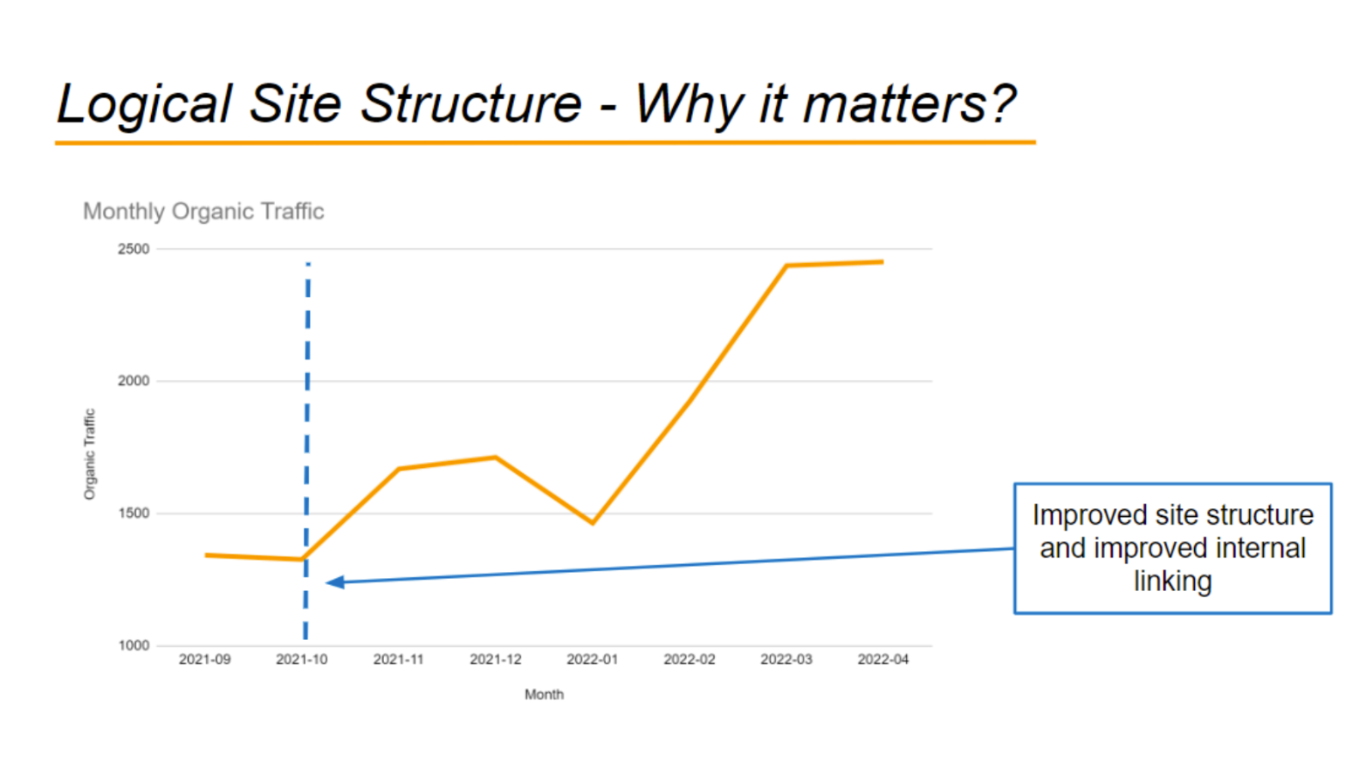
- Site Performance (PageSpeed and Core Web Vitals): Site performance plays a significant role in both user experience and search engine rankings. Here’s why it is important:
- Site Speed as a Ranking Factor: Google considers site speed as one of the ranking factors. Websites that load faster tend to provide a better user experience, and search engines prioritize delivering the best user experience.
- Crawler Behavior: Slow-loading websites may cause search engine crawlers to give up on crawling, leading to incomplete indexing and potential visibility issues.
- Core Web Vitals as Ranking Factors: Core Web Vitals are a set of specific metrics that measure the user experience of a web page, including loading, interactivity, and visual stability. Optimizing these metrics, such as Largest Contentful Paint (LCP), First Input Delay (FID), and Cumulative Layout Shift (CLS), can positively impact your website’s rankings.
To optimize site performance, consider implementing the following best practices:
- Optimizing Images: Compressing and properly sizing images to reduce file sizes without compromising quality.
- Eliminating Render Blocking JS: Minimizing the use of render-blocking JavaScript and optimizing its loading to enhance page rendering speed.
- Minimizing Server Response Time: Optimizing server configurations and reducing response times to ensure faster content delivery.
- Implementing Browser Caching: Enabling browser caching to store static resources, such as images and CSS files, locally on a user’s device, allowing for faster subsequent page loads.
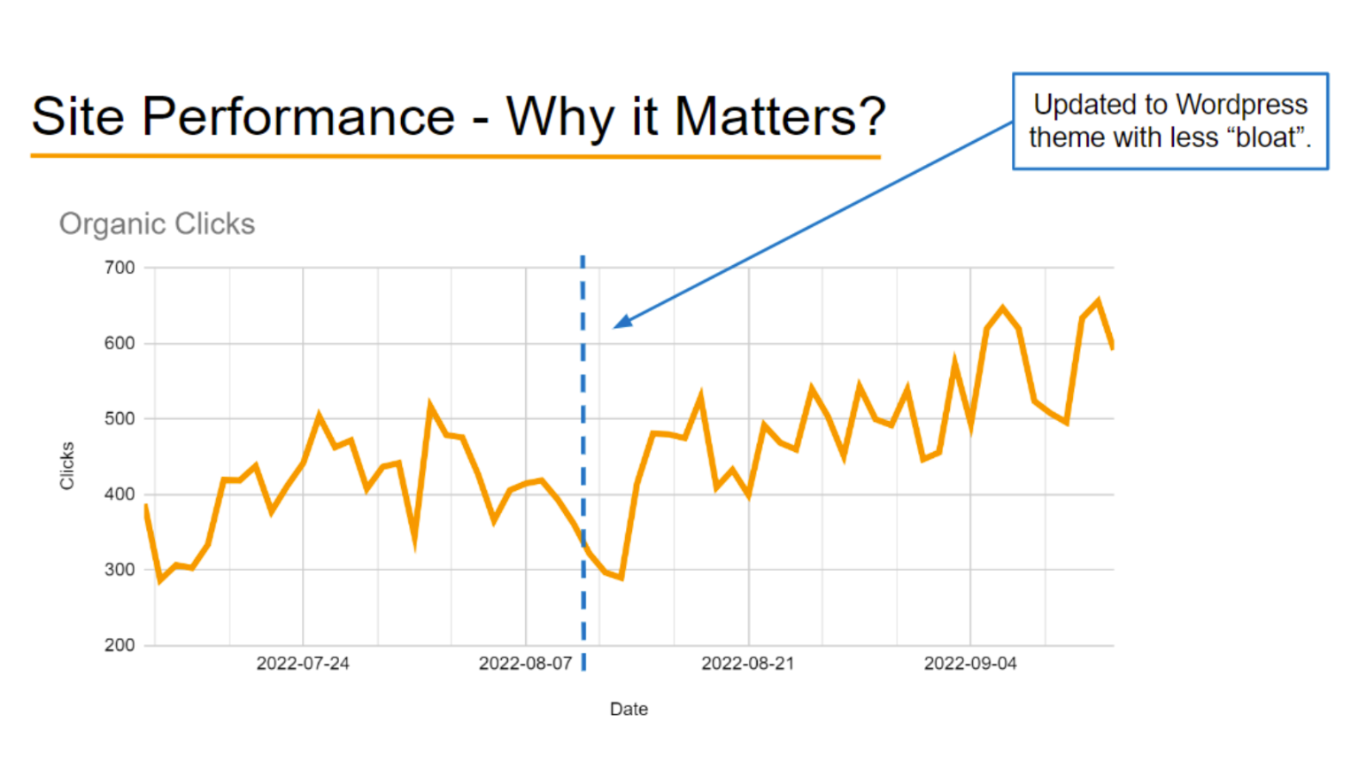
By considering site structure and internal linking, as well as optimizing site performance, you lay a strong foundation for an SEO-friendly website. These technical considerations, when implemented from the start, can improve your website’s crawlability, indexability, and user experience, leading to better search engine rankings and overall performance.
Keyword Research
If you’re not creating content that actually suitably answers your target audience’s search queries, then no amount of technical, on-page or link profile optimizations will drive relevant traffic to your site.
Golden Rule: A single web page should be laser focused on one specific topic e.g. a specific product or service.
To optimize your content for search engines, it’s important to follow the golden rule of having a single web page laser-focused on one specific topic, such as a particular product or service. Mixing multiple unrelated topics on a single page makes it challenging to optimize effectively for each topic. By maintaining a clear topical focus, you can better optimize the page for relevant keywords and increase its chances of ranking prominently in search results for queries related to that specific topic.
“Do thorough keyword research in the early days. The biggest mistake I see is that startups wait a year, two years, even three years to try to start optimizing for specific keywords when they could have been doing that the entire time.” – Corey Haines, Refactoring Growth
Keyword Research Process – Simplified:
Keyword research involves identifying keywords and topics that are relevant, have sufficient search volume, and are not overly competitive. Here’s a simplified keyword research process:
- Relevance: Choose keywords or topics that are directly related to your product or service offering. The content you create should align with your business and target audience.
- Volume: Identify keywords or topics that have a reasonable search volume. Tools like Google Keyword Planner, SEMrush, or Ahrefs can help you analyze search volume data for specific keywords.
- Difficulty: Assess the competitiveness of keywords by considering the authority of your website compared to your competitors. Highly competitive keywords may require more time and effort to rank for, especially if you’re competing against established industry players. Consider targeting keywords with a balance of relevance and relatively lower competition.
A Note on User Intent:
When creating content for a particular keyword or topic, it’s crucial to consider user intent. User intent refers to the reason behind a user’s search query and the type of information they are seeking. Understanding the intent behind specific keywords helps you create content that matches that intent and provides the most relevant and valuable information to users. Consider whether the intent is informational, navigational, transactional, or commercial, and tailor your content to fulfill that intent.
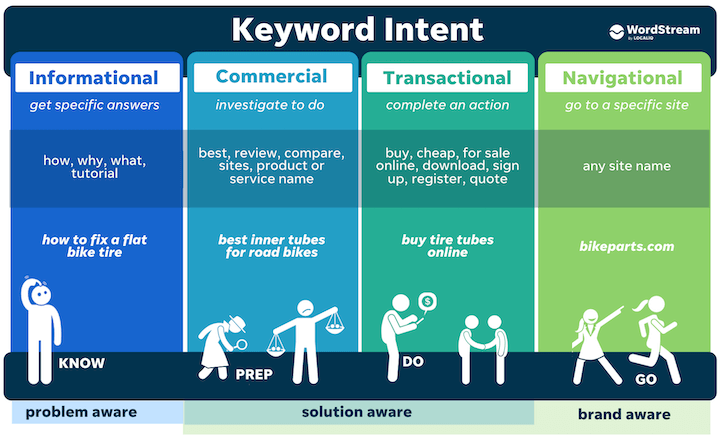
Creating Great content
Your keyword mapping at the end of your keyword research will have resulted in:
- A list of existing pages that should be optimized for specific groups of keywords
- A list of required new pages that should be created for specific groups of keywords
So now we need to go about creating and / or optimizing content. There are a few specific elements that should be optimized towards your target keywords, but writing SEO friendly content is no longer just about “keyword stuffing”.
You should aim to write the most insightful, trustworthy content on the web for whatever topic it is that you are writing about.
“Focus on creating unique, high-quality, insightful, and well-researched articles. Write for people, not search engines. Focus on quality, not quantity. It’s better to publish one insightful, researched, and high-quality blog post every two weeks than two low-quality, low-value blog posts per week.” – Jonathan Aufray, Growth Hackers
Writing SEO Friendly Content – The Basics
Now that we have identified the keywords / topics for which we need content, we need to create a web page for each. The topic of the given web page should be the focus of (in order of priority):
- your page title tag
- the opening 100 words of your content (and throughout)
- your meta description
- your page path / URL
- your image alt text tags
- Your headings (where reasonable)
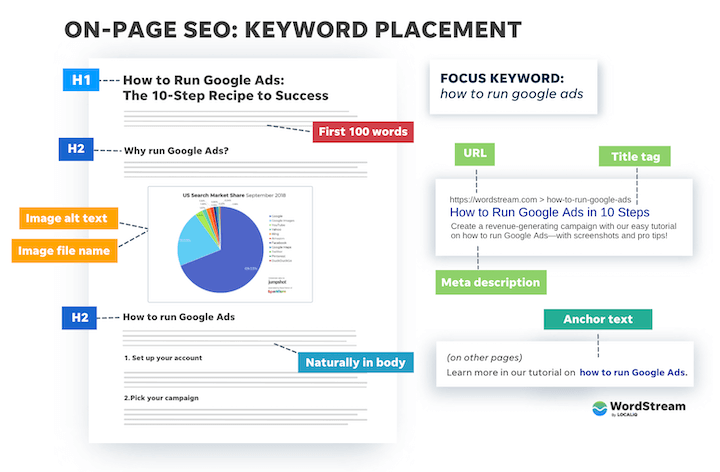
Writing SEO Friendly Content – Experience, Expertise, Authoritativeness and Trust (EEAT)
Basic optimization of your on page content is, unfortunately, not enough to guarantee rankings. A content piece’s level of E-E-A-T is carefully considered by Google when deciding what content ranks towards the top of their search results.
E-E-A-T is especially important for YMYL content (Your Money, Your Life – e.g. news, government / law financial advice, shopping info, medical advice, info on people, etc.).
Expertise: This refers to the creator of the main content (MC) on the page. Are they an expert on the topic? Do they have the credentials, if necessary, to back that up, and is this information available to read on the website?
Experience: This refers to the MC creator. Does the content also demonstrate that it was produced with some degree of experience, such as with actual use of a product, having actually visited a place or communicating what a person experienced? There are some situations where really what you value most is content produced by someone who has first-hand, life experience on the topic at hand.
Authoritativeness: This refers to the MC creator, the content itself, and the website on which it appears. “Authoritativeness” means having generally recognized authority. People know you, know your background, and look to you as a leader in your industry. They accept you as a good source of information.
Trustworthiness: The “Trustworthiness” part of E-A-T also refers to the MC creator, the content, and the website. Being a trustworthy expert and source means people can trust you to provide honest, true information that is accurate.
How to Showcase E-E-A-T
Expertise: Make sure that your content is written by an author that is genuinely an expert on the topic. Prove this by linking from an author bio on the content piece to an author profile page on site with links to the authors other online profiles and previous work. Use “author” schema.org markup to indicate to search engines who the author is and what their credentials are.
Experience: Whilst there may seem to be some ambiguity around experience vs expertise, one way of making a distinction between both, as per YOAST, is:
“While expertise relates to your knowledge, experience is closely linked to your direct involvement with a particular subject.”
Essentially, content should be written (or at least reviewed) by authors with first hand experience of the topic of the content and this should be demonstrated clearly in the content. Again author bio’s that showcase relevant experience work well here when writing about certain topics or concepts. It can also help, in many cases, to showcase your experience by writing from the first person perspective.
Authoritativeness: Again, at content level – clearly attribute your content to authors who have expertise and authority in their respective fields. Highlight the qualifications, credentials, and professional experience of your authors to establish trust and credibility. Including author bios and linking to their professional profiles can further enhance the perception of expertise and authority. Proving an author’s credentials here via outbound links to other profiles along with author schema.org markup will help to prove authoritativeness.
You can also showcase the authority of your domain and business by displaying your achievements, recognitions, testimonials, reviews, ratings, or endorsements clearly on your site.
Trustworthiness: Show Google that your content is trustworthy by including reliable sources to any key information or claims that you make. You can further boost trustworthiness of your content by attracting inbound links from other trusted sources.
At website level, trustworthiness can be boosted by:
- Ensuring your site is secure by using HTTPS, SSL, or other encryption methods to protect your website and your users’ data
- Providing clear, easily accessible information about who is behind the business and how to contact them (e.g. address and phone number)
- Providing clear and easily accessible info on privacy policies, refund and return policies, terms and conditions, etc.
Boost Your Domains Link Profile
Google’s PageRank algorithm, developed by Larry Page, emphasized the significance of inbound links in determining a website’s importance. The more high-quality links a page receives, the more important it is considered. Thus, building a strong link profile is crucial for improving your website’s visibility and rankings.
“PageRank works by counting the number and quality of links to a page to determine a rough estimate of how important the website is. The underlying assumption is that more important websites are likely to receive more links from other websites.” – Google (archived page)
It’s important to note that the quality of inbound links is more important than the quantity. Focus on acquiring high-quality links from reputable and relevant websites. These links carry more weight and contribute to building your domain’s authority.
The Authority Challenge for Startups:
As a startup, you will usually have a brand new website on a brand new domain. This means that you will likely be starting with zero links and thus zero authority in the eyes of Google.
More often than not, you will be competing for search traffic with far more established businesses who have websites that have built up links and authority over the years, even if they haven’t specifically been investing that much in SEO.

You, somehow, need to catch up with your competitors’ domain authority by building high quality, trusted links to your own website content.
How to Measure your Backlink Profile:
While Google no longer provides public access to the PageRank score, you can use third-party indicators like MOZ Domain Authority, aHrefs Domain Rating, and SEMrush Authority Score to assess the authority of a domain. These metrics give you an idea of the strength of your backlink profile and how it compares to your competitors.
Link Building: Some Obvious Places to Start
There are countless tactics you can consider to build links to your domain. Most of the obvious places to start fall under one of two categories: Outreach or Content
Outreach:
- Partner Outreach: Reach out to existing partners and other sites in your network to secure backlinks.
- Directories: Submit your website to reputable industry directories that can provide relevant backlinks.
- (Digital) PR: Utilize press releases and digital PR efforts to earn media coverage and valuable backlinks from authoritative sources.
- Sponsorship: Consider sponsoring events, organizations, or relevant projects that can lead to backlinks from their websites.
- Guest Posting: Contribute high-quality guest posts to authoritative blogs or publications within your industry.
- Podcast Contributions: Participate as a guest on relevant podcasts to gain exposure and acquire backlinks from show notes or episode descriptions.
Content:
- High quality, expert content: Creating high-quality and expert content is a powerful way to attract natural backlinks, particularly when paired with social sharing. Focus on producing informative articles, research studies, case studies, and other valuable resources that can earn links from other websites.
- Useful downloadable resources and interactive tools: Developing useful downloadable resources (particularly those based on 1st party data that make them unique) or interactive tools can also attract attention and generate backlinks.
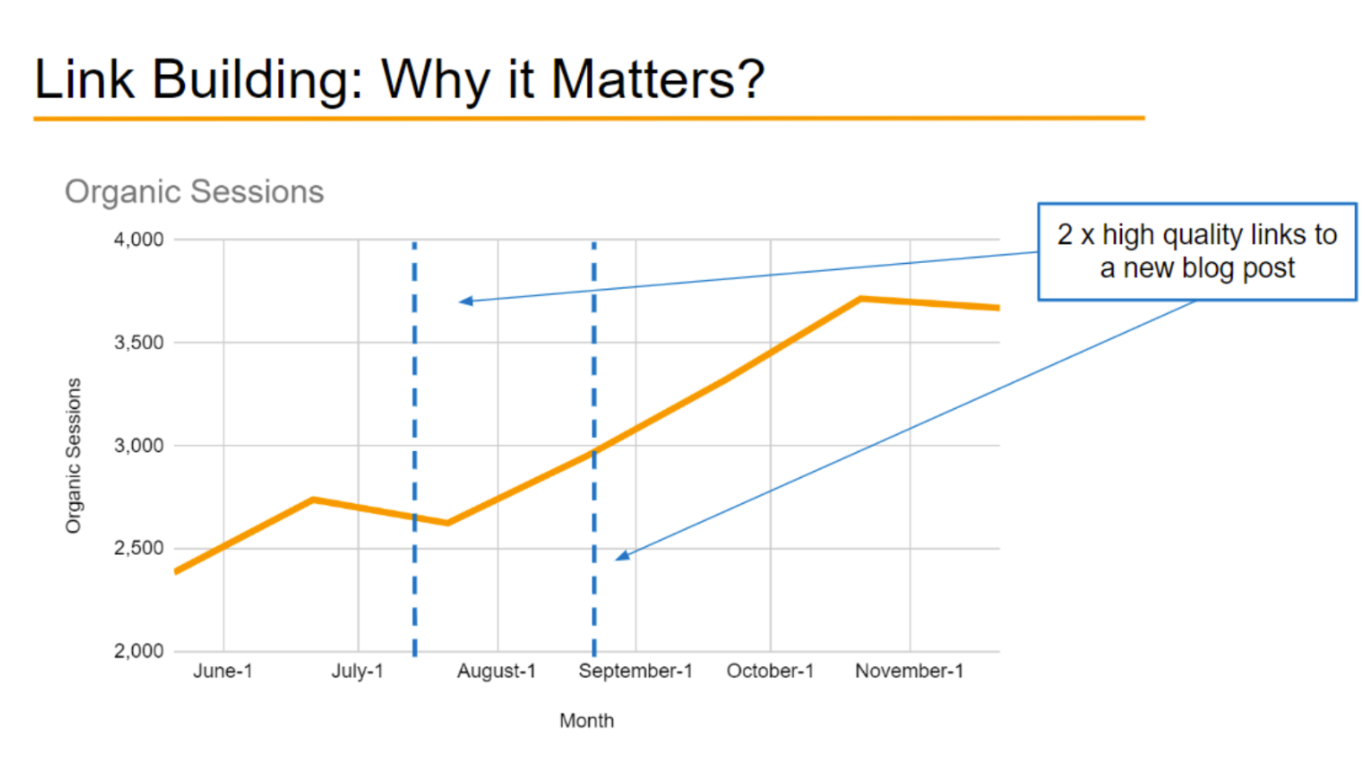
For more specific ideas and inspiration, review your competitors’ sites with an SEO tool like aHrefs / MOZ / SEMrush to identify where they are getting links from and what kind of content is attracting links for them.
Conclusion
SEO can be a highly effective tool for driving traffic and growth for startups. By understanding the basics of SEO, understanding your specific niche, focusing on key success factors, and addressing unique challenges, startups can build strong, long-lasting presences in the search results that drive significant traffic and growth.
If you’d like to discuss an SEO Strategy for your start-up, please reach out for a chat with our SEO Lead, Darren McManus here.

Darren McManus is an accomplished SEO Lead at Velocity Growth, a leading digital marketing agency. With over seven years of experience working agency-side, Darren has established himself as an expert in the field of SEO. Based in Galway, Ireland, he has developed bespoke SEO roadmaps and implemented long-term, award-winning SEO strategies for clients spanning various industries.
Darren possesses in-depth knowledge and experience across all areas of SEO, including technical optimization, on-site optimization, and off-site optimization. His comprehensive understanding of search engine optimization techniques enables him to craft effective strategies that significantly enhance organic visibility, drive website traffic, and generate conversions for his clients.
His expertise in SEO has been instrumental in helping his clients achieve their digital marketing goals and grow their businesses online. His track record of success demonstrates his ability to deliver tangible results in highly competitive markets.




